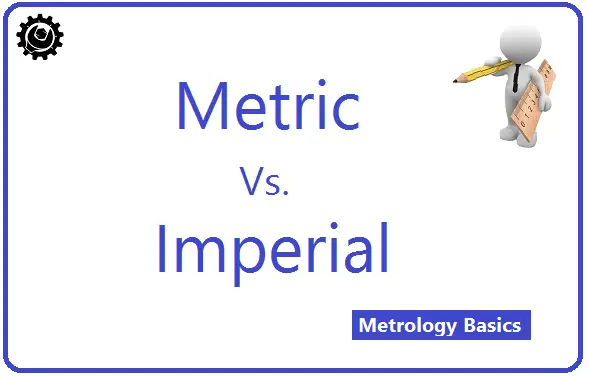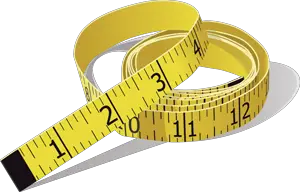Metric vs Imperial: Which System Wins?

The debate between the metric and imperial systems of measurement has long been a point of contention and curiosity. With different countries favoring one system over the other, it raises the question: Which system truly reigns supreme in terms of practicality, global adoption, and scientific precision? Let’s delve into this fascinating exploration, uncovering the strengths and weaknesses of each measurement giant.
A Historical Perspective

The metric system, also known as the International System of Units (SI), traces its origins back to the French Revolution. Born out of a desire for standardization and simplicity, it was designed to be a universal language of measurement, transcending borders and languages. On the other hand, the imperial system, deeply rooted in British history, has its foundations in ancient Roman and Anglo-Saxon traditions. This older system, with its quirky units like yards and pounds, has endured through centuries, leaving an indelible mark on many parts of the world.
Practicality and Global Reach

When it comes to practicality, the metric system emerges as the clear winner. Its simplicity lies in its decimal-based nature, making calculations and conversions remarkably straightforward. For instance, converting between meters and centimeters is as easy as shifting the decimal point. In contrast, the imperial system often requires complex fractions and conversions that can be a headache for everyday use.
However, the imperial system’s legacy cannot be ignored. It has been deeply ingrained in certain cultures and industries, especially in the United Kingdom and the United States. For instance, the British still use miles for road distances, and Americans persist with inches and feet for everyday measurements. This cultural and historical context gives the imperial system a unique charm and familiarity.
Scientific Precision and Adoption
In the realm of science and international trade, the metric system’s dominance is undeniable. It is the official system for scientific research, engineering, and commerce in most countries. The simplicity and consistency of the metric system make it the preferred choice for precise measurements in fields like physics, chemistry, and medicine.
Despite this, the imperial system has its strongholds. In aviation, for example, altitude is still measured in feet, a legacy of the system’s early adoption in the industry. Additionally, some traditional industries like brewing and baking often rely on imperial units, creating a blend of both systems in certain specialized fields.
A Unified Future?
The question remains: Can we envision a world with a unified measurement system? While the metric system’s global reach is extensive, it has not yet fully replaced the imperial system in certain regions. Efforts to fully adopt the metric system, like the U.S. Metric Conversion Act, have met with varying degrees of success.
Some argue that a complete transition would simplify international trade and scientific collaboration. However, the emotional and cultural connections people have with their traditional measurement systems cannot be overlooked. The challenge lies in finding a balance between standardization and respecting cultural heritage.
Conclusion: A Tale of Two Systems

In the battle between the metric and imperial systems, there is no clear winner. Each system has its unique advantages and historical significance. While the metric system’s practicality and scientific precision make it the preferred choice for modern times, the imperial system’s rich history and cultural ties ensure its continued existence.
Perhaps, instead of a winner-takes-all scenario, we should embrace the diversity and acknowledge the strengths of both systems. After all, in the grand tapestry of human knowledge and progress, variety adds a touch of richness and intrigue.
What are the key advantages of the metric system over the imperial system?
+The metric system’s key advantages lie in its simplicity, consistency, and ease of use. With a decimal-based structure, conversions between units are straightforward, making it ideal for scientific research, engineering, and international trade. Additionally, its global adoption means that it serves as a universal language of measurement, facilitating communication and collaboration across borders.
Why do some countries still use the imperial system despite the metric system’s advantages?
+The persistence of the imperial system in certain countries, like the United Kingdom and the United States, can be attributed to cultural and historical factors. These systems have been deeply ingrained in the daily lives and industries of these nations, creating a sense of familiarity and tradition. Changing such deeply rooted practices requires a delicate balance between modernization and respecting cultural heritage.
Are there any industries where the imperial system is still the preferred choice?
+Yes, the imperial system retains its relevance in specific industries. For instance, in aviation, altitude is still commonly measured in feet. In brewing and baking, traditional recipes and processes often rely on imperial units. These industries have a blend of both systems, highlighting the unique historical and practical reasons for their continued use.
Can we expect a complete transition to the metric system in the future?
+The future of measurement systems is a complex question. While efforts to adopt the metric system have been ongoing, a complete transition may not be feasible or desirable. Balancing the need for standardization with the respect for cultural traditions is a delicate task. The diversity of measurement systems adds a layer of richness to our global society, and finding a harmonious coexistence might be the ultimate goal.



